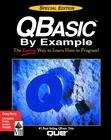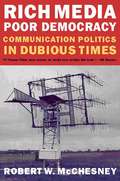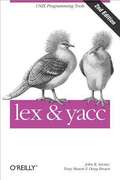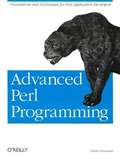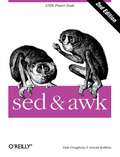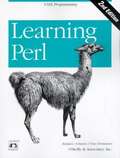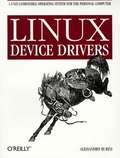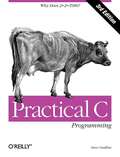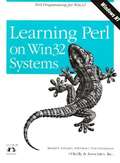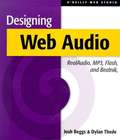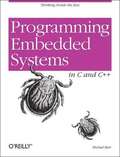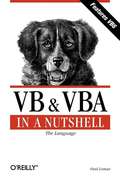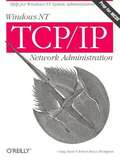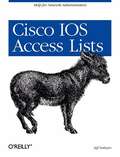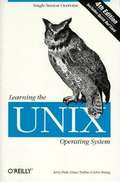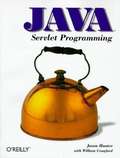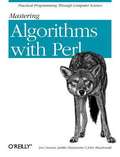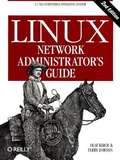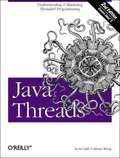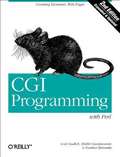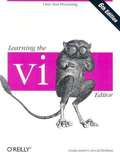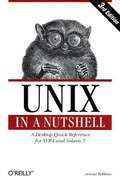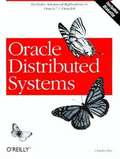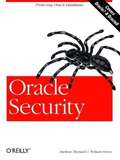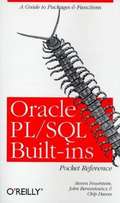- Table View
- List View
Qbasic by Example (Special Edition)
by Greg M. Perry Que Publishing StaffThis book began in 1978, when I first turned on a computer and opened a BASIC manual to page 1, having never touched a computer before. Since then, I have continued to learn and teach BASIC. From that first Microsoft BASIC language, I taught many others, but Microsoft's variants of BASIC continue to be my favorites and old standbys. I am glad that Mr. Gates and his crew at Microsoft continue to support this language; it looks as though they are dedicated, more than ever, to keeping the BASIC flame alive with QBasic.
Rich Media, Poor Democracy: Communication Politics in Dubious Times
by Robert W. McchesneyIn this myth-breaking book, McChesney argues that the media, far from providing a bedrock for freedom and democracy, have become a significant anti-democratic force in the United States and, to varying degrees, worldwide.
lex & yacc, 2nd Edition
by John R. Levine Tony Mason Doug BrownThis book shows you how to use two Unix utilities, lex and yacc, in program development. These tools help programmers build compilers and interpreters, but they also have a wider range of applications. The second edition contains completely revised tutorial sections for novice users and reference sections for advanced users. This edition is twice the size of the first and has an expanded index. The following material has been added: *Each utility is explained in a chapter that covers basic usage and simple, stand-alone applications *How to implement a full SQL grammar, with full sample code *Major MS-DOS and Unix versions of lex and yacc are explored in depth, including AT&T lex and yacc , Berkeley yacc, Berkeley/GNU Flex, GNU Bison, MKS lex and yacc, and Abraxas PCYACC.
Advanced Perl Programming
by Sriram SrinivasanThis book covers complex techniques for managing production-ready Perl programs and explains methods for manipulating data and objects that may have looked like magic before. It gives you necessary background for dealing with networks, databases, and GUIs, and includes a discussion of internals to help you program more efficiently and embed Perl within C or C within Perl.
sed & awk, Second Edition
by Arnold Robbins Dale Doughertysed & awk describes two text manipulation programs that are mainstays of the UNIX programmer's toolbox. This edition covers the sed and awk programs as they are mandated by the POSIX standard and includes discussion of the GNU versions of these programs.
Learning Perl, 2nd Edition
by Tom Christiansen Randal L. SchwartzIn this update of a bestseller, two leading Perl trainers teach you to use the most universal scripting language in the age of the World Wide Web. With a foreword by Larry Wall, the creator of Perl, this smooth, carefully paced book is the "official" guide for both formal (classroom) and informal learning. It is now current for Perl version 5.004. Learning Perl is a hands-on tutorial designed to get you writing useful Perl scripts as quickly as possible. Exercises (with complete solutions) accompany each chapter. A lengthy new chapter in this edition introduces you to CGI programming, while touching also on the use of library modules, references, and Perl's object-oriented constructs. Perl is a language for easily manipulating text, files, and processes. It comes standard on most UNIX platforms and is available free of charge on all other important operating systems. Perl technical support is informally available -- often within minutes -- from a pool of experts who monitor a USENET newsgroup (comp.lang.perl.misc) with tens of thousands of readers. Contents include: A quick tutorial stroll through Perl basics Systematic, topic-by-topic coverage of Perl's broad capabilities Lots of brief code examples Programming exercises for each topic, with fully worked-out answers How to execute system commands from your Perl program How to manage DBM databases using Perl An introduction to CGI programming for the Web
Linux Device Drivers
by Alessandro RubiniThis book is for anyone who wants to support computer peripherals under the Linux operating system or who wants to develop new hardware and run it under Linux. Linux is the fastest-growing segment of the UNIX market and is winning over enthusiastic adherents in many application areas. This book reveals information that heretofore has been passed by word-of-mouth or in cryptic source code comments, showing how to write a driver for a wide range of devices. You don't have to be a kernel hacker to understand and enjoy this book; all you need is an understanding of C and some background in UNIX system calls. Drivers for character devices, block devices, and network interfaces are all described in step-by-step form and are illustrated with full-featured examples that show driver design issues, which can be executed without special hardware. For those who are curious about how an operating system does its job, this book provides insights into address spaces, asynchronous events, and I/O. Portability is a major concern in the text. The book is centered on version 2.0, but also covers 1.2.13 and experimental versions up to 2.1.43. You are also told how to maximize portability among hardware platforms. Contents include: Building a driver and loading modules Complete character, block, and network drivers Debugging a driver Timing Memory management and DMA Interrupts Portability issues Peripheral Component Interconnect (PCI) A tour of kernel internals
Practical C Programming, 3rd Edition
by Steve OuallinePractical C Programming teaches you not only the mechanics of programming, but also how to create programs that are easy to read, maintain, and debug. This third edition introduces popular Integrated Development Environments on Windows systems, as well as UNIX programming utilities, and features a large statistics-generating program to pull together the concepts and features in the language.
Learning Perl on Win32 Systems
by Tom Christiansen Erik Olson Randal L. SchwartzIn this smooth, carefully paced course, leading Perl trainers and a Windows NT practitioner teach you to program in the language that promises to emerge as the scripting language of choice on NT. With a foreword by Larry Wall, the creator of Perl, this book is the "official" guide for both formal (classroom) and informal learning. Based on the "llama book," Learning Perl on Win32 Systems features tips for PC users and new NT-specific examples. Perl for Win32 is a language for easily manipulating text, files, user and group profiles, performance and event logs, and registry entries, and a distribution is available on the Windows NT Resource Kit. Peer-to-peer technical support is now available on the perl.win32.users mailing list. The contents include: An introduction to "the Perl way" for Windows users A quick tutorial stroll through Perl in one lesson Systematic, topic-by-topic coverage of Perl's broad capabilities Innumerable, brief code examples Programming exercises for each topic, with fully worked-out answers Access to NT system functions through Perl Database access with Perl CGI programming with Perl Erik Olson is director of advanced technologies for Axiom Technologies, LC, where he specializes in providing Win32 development solutions. Randal L. Schwartz and Tom Christiansen have also written Programming Perl, co-authored with Larry Wall and published by O'Reilly and Associates.
Designing Web Audio
by Josh Beggs Dylan ThedeDesigning Web Audio is the most complete Internet audio guide on the market, loaded with informative real-world case studies and interviews with some of the world's leading audio and web producers. Its step-by-step instructions on how to use the most popular web audio formats to stream music make it an invaluable resource for web developers and web music enthusiasts.
Programming Embedded Systems in C and C++
by Michael BarrThis book introduces embedded systems to C and C++ programmers. Topics include testing memory devices, writing and erasing Flash memory, verifying nonvolatile memory contents, controlling on-chip peripherals, device driver design and implementation, optimizing embedded code for size and speed, and making the most of C++ without a performance penalty.
VB & VBA in a Nutshell: The Language
by Paul LomaxFor Visual Basic and VBA programmers, this book boils down the essentials of the VB and VBA languages into a single volume, including undocumented and little-documented areas essential to everyday programming. The convenient alphabetical reference to all functions, procedures, statements, and keywords allows programmers to use this book both as a standard reference guide and as a tool for troubleshooting and identifying programming problems.
Windows NT TCP/IP Network Administration
by Craig Hunt Robert Bruce ThompsonWindows NT TCP/IP Network Administration is a complete guide to setting up and running a TCP/IP network on Windows NT. It starts with the fundamentals-- the protocols, routing, and setup. Beyond that, it covers all the important networking services provided as part of Windows NT, including IIS, RRAS, DNS, WINS, and DHCP. This book is the NT administrator's indispensable guide.
Cisco IOS Access Lists
by Jeff SedayaoThis book focuses on a critical aspect of the Cisco IOS--access lists, which are central to securing routers and networks. Administrators cannot implement access control or traffic routing policies without them. The book covers intranets, firewalls, and the Internet. Unlike other Cisco router titles, it focuses on practical instructions for setting router access policies rather than the details of interfaces and routing protocol settings.
Learning the UNIX Operating System, 4th Edition
by Jerry Peek John Strang Grace Todino-GonguetIf you are new to UNIX, this concise introduction will tell you just what you need to get started and no more. Why wade through a 600-page book when you can begin working productively in a matter of minutes? It's an ideal primer for Mac and PC users of the Internet who need to know a little bit about UNIX on the systems they visit. This book is the most effective introduction to UNIX in print. The fourth edition covers the highlights of the Linux operating system. It's a handy book for someone just starting with UNIX or Linux, as well as someone who encounters a UNIX system on the Internet. And it now includes a quick-reference card. Topics covered include: Linux operating system highlights Logging in and logging out Window systems (especially X/Motif) Managing UNIX files and directories Sending and receiving mail Redirecting input/output Pipes and filters Background processing Basic network commandsv
Java Servlet Programming
by Jason HunterA few years ago, the hype surrounding applets put Java on the map as a programming language for the Web. Today, Java servlets stand poised to take Java to the next level as a Web development language. The main reason is that servlets offer a fast, powerful, portable replacement for CGI scripts. The Java Servlet API, introduced as the first standard extension to Java, provides a generic mechanism to extend the functionality of any kind of server. Servlets are most commonly used, however, to extend Web servers, performing tasks traditionally handled by CGI programs. Web servers that can support servlets include: Apache, Netscape's FastTrack and Enterprise Servers, Microsoft's IIS, O'Reilly's WebSite, and JavaSoft's Java Web Server. The beauty of servlets is that they execute within the Web server's process space and they persist between invocations. This gives servlets tremendous performance benefits over CGI programs. Yet because they're written in Java, servlets are far less likely to crash a Web server than a C-based NSAPI or ISAPI extension. Servlets have full access to the various Java APIs and to third-party component classes, making them ideal for use in communicating with applets, databases, and RMI servers. Plus, servlets are portable between operating systems and between servers -- with servlets you can "write once, serve everywhere." Java Servlet Programming covers everything you need to know to write effective servlets and includes numerous examples that you can use as the basis for your own servlets. The book explains the servlet life cycle, showing how you can use servlets to maintain state information effortlessly. It also describes how to serve dynamic Web content, including both HTML pages and multimedia data. Finally, it explores more advanced topics like integrated session tracking, efficient database connectivity using JDBC, applet-servlet communication, inter-servlet communication, and internationalization.
Mastering Algorithms with Perl
by Jon Orwant Jarkko Hietaniemi John MacdonaldMany programmers would love to use Perl for projects that involve heavy lifting, but miss the many traditional algorithms that textbooks teach for other languages. Computer scientists have identified many techniques that a wide range of programs need, such as: Fuzzy pattern matching for text (identify misspellings!) Finding correlations in data Game-playing algorithms Predicting phenomena such as Web traffic Polynomial and spline fitting Using algorithms explained in this book, you too can carry out traditional programming tasks in a high-powered, efficient, easy-to-maintain manner with Perl. This book assumes a basic understanding of Perl syntax and functions, but not necessarily any background in computer science. The authors explain in a readable fashion the reasons for using various classic programming techniques, the kind of applications that use them, and -- most important -- how to code these algorithms in Perl. If you are an amateur programmer, this book will fill you in on the essential algorithms you need to solve problems like an expert. If you have already learned algorithms in other languages, you will be surprised at how much different (and often easier) it is to implement them in Perl. And yes, the book even has the obligatory fractal display program. There have been dozens of books on programming algorithms, some of them excellent, but never before has there been one that uses Perl. The authors include the editor of The Perl Journal and master librarian of CPAN; all are contributors to CPAN and have archived much of the code in this book there. "This book was so exciting I lost sleep reading it." Tom Christiansen
Linux Network Administrator's Guide, Second Edition
by Terry Dawson Olaf KirchFully updated, this impressive, comprehensive introduction to networking on Linux now covers firewalls, including the use of ipchains and iptables (netfilter), masquerading, and accounting. Other new topics include Novell (NCP/IPX) support and INN (news administration). Original material on serial connections, UUCP, routing and DNS, mail and News, SLIP and PPP, NFS, and NIS has been thoroughly updated.
Java Threads, 2nd Edition
by Scott Oaks Henry WongThreads aren't a new idea: many operating systems and languages support them. But despite widespread support, threads tend to be something that everyone talks about, but few use. Programming with threads has a reputation for being tricky and nonportable. Not so with Java. Java's thread facilities are easy to use, and--like everything else in Java--are completely portable between platforms. And that's a good thing, because it's impossible to write anything but the simplest applet without encountering threads. If you want to work with Java, you have to learn about threads. This new edition shows you how to take full advantage of Java's thread facilities: where to use threads to increase efficiency, how to use them effectively, and how to avoid common mistakes. Java Threads discusses problems like deadlock, race condition, and starvation in detail, helping you to write code without hidden bugs. It brings you up to date with the latest changes in the thread interface for JDK 1.2. The book offers a thorough discussion of the Thread and ThreadGroup classes, the Runnable interface, the language's synchronized operator. It explains thread scheduling ends by developing a CPUSchedule class, showing you how to implement your own scheduling policy. In addition, Java Threads shows you how to extend Java's thread primitives. Other extended examples include classes that implement reader/writer locks, general locks, locks at arbitrary scope, and asynchronous I/O. This edition also adds extensive examples on thread pools, advanced synchronization technique, like condition variables, barriers, and daemon locks. It shows how to work with classes that are not thread safe, and pays special attention to threading issues with Swing. A new chapter shows you how to write parallel code for multiprocessor machines. In short, Java Threads covers everything you need to know about threads, from the simplest animation applet to the most complex applications. If you plan to do any serious work in Java, you will find this book invaluable. Examples available online. Covers Java 2.
CGI Programming with Perl, 2nd Edition
by Gunther Birznieks Scott Guelich Shishir GundavaramProgramming on the Web today can involve any of several technologies, but the Common Gateway Interface (CGI) has held its ground as the most mature method--and one of the most powerful ones--of providing dynamic web content. CGI is a generic interface for calling external programs to crunch numbers, query databases, generate customized graphics, or perform any other server-side task. There was a time when CGI was the only game in town for server-side programming; today, although we have ASP, PHP, Java servlets, and ColdFusion (among others), CGI continues to be the most ubiquitous server-side technology on the Web. CGI programs can be written in any programming language, but Perl is by far the most popular language for CGI. Initially developed over a decade ago for text processing, Perl has evolved into a powerful object-oriented language, while retaining its simplicity of use. CGI programmers appreciate Perl's text manipulation features and its CGI.pm module, which gives a well-integrated object-oriented interface to practically all CGI-related tasks. While other languages might be more elegant or more efficient, Perl is still considered the primary language for CGI. CGI Programming with Perl, Second Edition, offers a comprehensive explanation of using CGI to serve dynamic web content. Based on the best-selling CGI Programming on the World Wide Web, this edition has been completely rewritten to demonstrate current techniques available with the CGI.pm module and the latest versions of Perl. The book starts at the beginning, by explaining how CGI works, and then moves swiftly into the subtle details of developing CGI programs. Topics include: Incorporating JavaScript for form validation Controlling browser caching Making CGI scripts secure in Perl Working with databases Creating simple search engines Maintaining state between multiple sessions Generating graphics dynamically Improving performance of your CGI scripts
Learning the vi Editor, Sixth Edition
by Linda Lamb Arnold RobbinsThis completely updated guide to editing with vi, the editor available on nearly every Unix system, now covers four popular viclones and includes command summaries for easy reference. It starts with the basics, followed by more advanced editing tools, such as ex commands, global search and replacement, and a new feature, multiscreen editing.
UNIX in a Nutshell: System V Edition
by Arnold RobbinsThe bestselling, most informative Unix reference book is now more complete and up to date. Not a scaled-down quick reference of common commands, UNIX in a Nutshell is a complete reference containing all commands and options, with descriptions and examples that put the commands in context. For all but the thorniest Unix problems, this one reference should be all you need. Covers System V Release 4 and Solaris 7.
Oracle Distributed Systems
by Charles DyeThis book describes how you can use multiple databases and both Oracle8 and Oracle7 distributed system features to best advantage. It covers design, configuration of SQL*Net/Net8, security, and Oracle's distributed options (advanced replication, snapshots, multi-master replication, updateable snapshots, procedural replication, and conflict resolution). Includes a complete API reference for built-in packages and a diskette with many helpful scripts and utilities.
Oracle Security
by William Heney Marlene TheriaultThis book covers the field of Oracle security from simple to complex. It describes basic RDBMS security features (e.g., passwords, profiles, roles, privileges, synonyms) and includes many practical strategies for securing an Oracle system, developing auditing and backup plans, and using the Oracle Enterprise Manager and Oracle Security Server. Also touches on advanced security features, such as encryption, Trusted Oracle, and Internet and Web protection.
Oracle PL/SQL Built-ins Pocket Reference
by Chip Dawes Steven Feuerstein John BeresniewiczThis companion quick reference to Steven Feuerstein's bestselling Oracle PL/SQL Programming and Oracle Built-in Packages will help you use Oracle's extensive set of built-in functions and packages, including those new to Oracle8. You'll learn how to call numeric, character, date, conversion, large object (LOB), and miscellaneous functions, as well as packages like DBMS_SQL and DBMS_OUTPUT.
